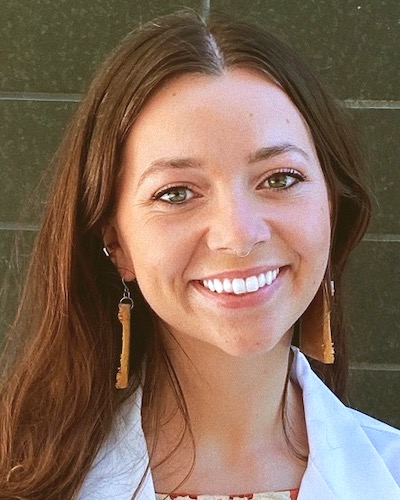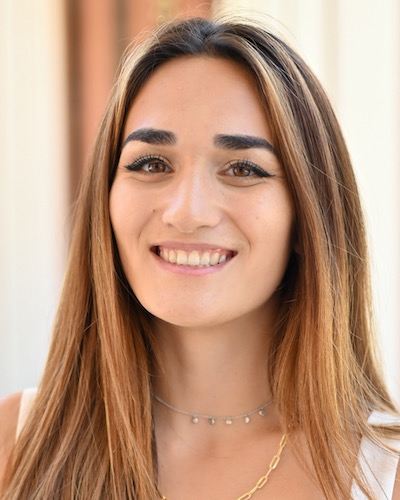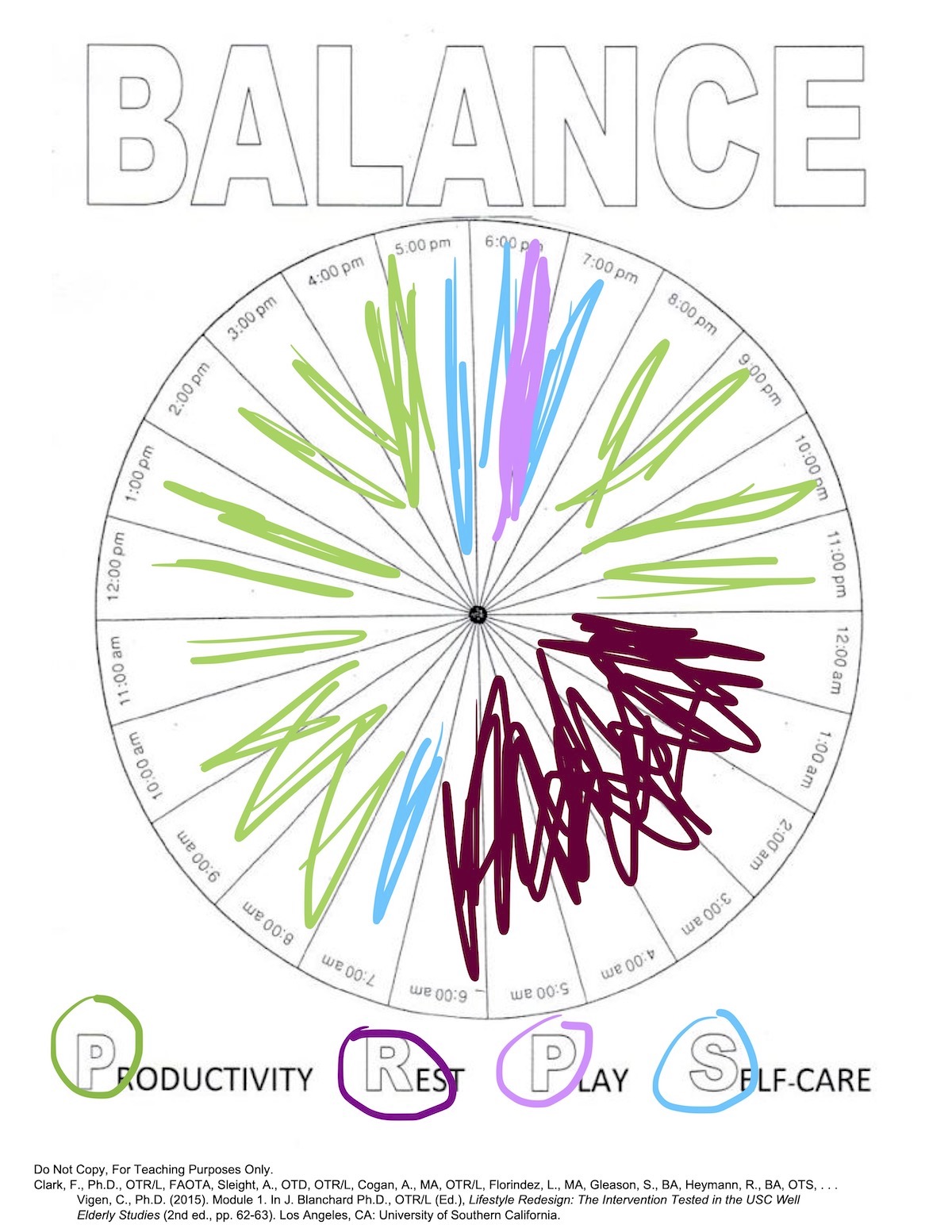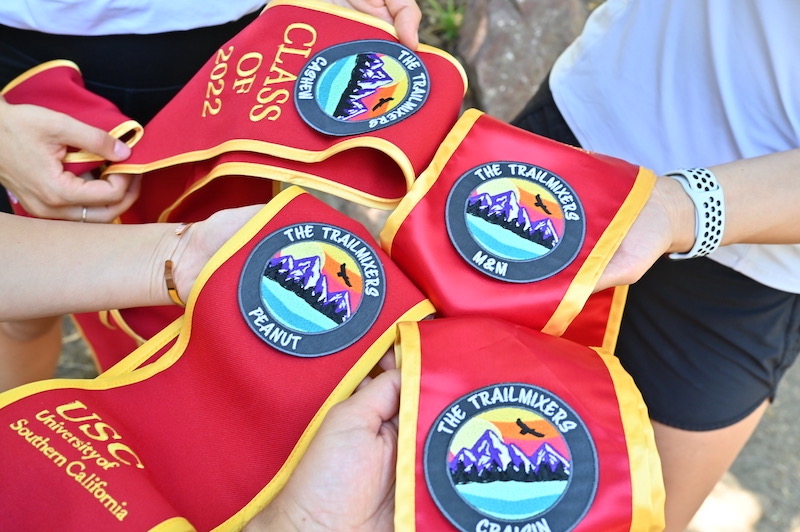Student Blog
Life Hacks

Tips for Your Personal Statement ⟩
November 4, 2022, by Leah
Admissions Life Hacks What are OS/OT?
Here are some tips and tricks on what helped me write my personal statement 😊
1. Reflect on what matters to you and see how it aligns with the school’s mission
I thought, why do I want to be an OT? I read through the division’s mission and most resonated with its commitment to inclusion. I then jotted down experiences and parts of my life that I most valued and thought related to this theme of inclusion.
2. Try finding a theme between your experiences to create a cohesive story.
This was a piece of advice I received from a previous mentor. I knew I had valuable experiences volunteering at an oncology camp, working in permanent supportive housing, and then working at a multiple sclerosis clinic. Still, these all felt like such different populations, so I needed to figure out how to share my story without feeling like I was jumping all over the place.
My mentor asked me questions such as:
How did one experience influence or lead to another?
What did you value in each of these experiences?
How did you continue to grow throughout these experiences?
Is there a commonality in how these experiences made you want to be an OT?
3. Get other eyes on your writing!
I know it can feel uncomfortable or even embarrassing to have other people look at what you have written. Still, I found it helpful to overcome that fear and get other people’s input. I wanted to see if my writing was conveying the message I wanted to share. For my statement, I had willing co-workers, mentors, and even roommates read through my essay. I received input such as: “this section is confusing” and “wow, I loved this story, focus more on that!” The most helpful thing I did was read my statement out loud with my roommate. I could identify awkward phrases, grammatical errors, and unnecessary words. Reading out loud was the most helpful in cutting my statement down to the required character count.
For all those applying this cycle, you got this!!
⋯

Practice What You Preach (Seriously) ⟩
November 1, 2022, by Leah Mary
Life Hacks Living in LA School/Life Balance
In school, we are told that participating in meaningful occupations, such as playing music, dancing, hanging out with our friends, or eating, is critical for people’s physical, emotional, and mental health. However, as OTs and students, we SUCK at this! I don’t know about you, but my OT balance wheel was always filled with productive hours rather than leisure or play, and I was often burnt out by the middle of the semester.

So last year, I picked up a meaningful hobby . . . hiking! Growing up, I was always big into the outdoors. I would go camping, biking, and cannoning around the Midwest. But, in high school and college, I lost touch with that side because “I didn’t have time.” I often was studying or working and had to prioritize those occupations.
However, when COVID-19 happened, I prioritized my meaningful occupations for my well-being. During my second year in the Master’s Program, I overheard a couple of classmates talking about hiking in Santa Monica. I gravitated toward that conversation and said, “could I possibly join????” During that hike, we shared our love for the outdoors and how much hiking there is in California. We prioritized a hike every weekend and came up with the name “Trailmixers” for our hiking group. And that’s what we did. With intentional planning, we could hike almost every week and still finish our schoolwork. Because of this, I had some of the most meaningful experiences of my life with my best friends. We’ve hiked Mt Baldy, Cucamonga, San Fran, Santa Barbara, Sedona, Pinnacles National Park, Zion, camped in Big Sur, and backpacked in Catalina Island.


My “productive work” has gotten a bit busier now that I’m balancing courses, residency, and campus jobs. However, no matter what, I always make sure I have a hike planned for the weekend. I hope each and every one of you prioritize your meaningful occupations throughout this semester and in life. Because for us to be great OTs, we must practice what we preach and lead by example.
There are excellent resources to start your hiking journey. The AllTrails app can help you plan trips, Airbnb or Recreation.gov to book housing/campsites, the REI store to buy gear, and “Peaks and Professors,” an outdoors club at USC to find a community.
⋯

No ⟩
October 25, 2022, by Bryan M.
Life Hacks
One of the biggest lessons that I’ve learned from my time in OT school has been the power of “no”. Although one of the first words humans learn how to use, it’s ironic that “no” has seemed to be one of the hardest words for me to implement regularly. Probably a combination of being raised as the child of immigrants and inherently being a people pleaser, I became accustomed to making my default answer to questions “yes” because I wanted to leave a good impression with others, jumping at any opportunity presented to me. I wanted to please the people around me, grow personally and professionally, and ultimately become better in any way possible.
I first noticed this tendency of jumping to “yes” when I was in undergrad at USC, and have seen it carry over to my time in graduate school here at Chan. As I started finding my footing in various student organizations, classes, and work, I found myself saying “yes” to any opportunity that presented itself to me. “Can you take on this leadership role that has a vacancy?” “Yes, absolutely, I would be happy to.” “Can you cover this shift for me?” “Sure, I could use the extra money.” “I’m running short on time for the project; could you finish the last part I couldn’t do on top of what you have already done?” “Sure, whatever works for the group.” “Do you plan to pursue more education once you graduate?” “Yes, I think that would be in my best interest.”
Many think that jumping at any opportunity presented leads to growth and development. And although that may be the case in many situations, I tragically found that it is not always the case in every situation. I found that as I took on more and more responsibilities, I was starting to become burnt out, fatigued, dispassionate, and complacent. I was spreading myself too thin, setting unrealistic expectations for myself just because I had the opportunity to do so. I was regressing, or, as I colloquially coined this personal phenomenon, “regr-yes-sing”.
This year, I made the goal to prioritize my own personal health and well-being, and that came with the understanding that I could only accomplish that by saying “no” to some opportunities. What I have come to realize is that saying “no” is completely okay! Understanding personal limitations is a huge part of maturation, and it’s something I’m happy I’m finally coming into.
Somewhat inadvertently, by saying “no” I’m actually saying “yes” to other things. I’m saying “yes” to my well-being, my friendships/relationships, my mental/physical health. By saying “no”, I’m finally giving myself permission to take a step back, acknowledge how hard I have worked, and relax so I can keep going later on.
⋯

OT school helped me get diagnosed with ADHD (and gain tools to thrive in grad school!) ⟩
October 6, 2022, by Leah
Community Life Hacks School/Life Balance
I have been called “spacey” my entire life. I had a big imagination and could spend hours enjoying my daydreaming, even at the dinner table or in class. I would get lost trying to go to my best friend’s house around the corner, lose everything I owned, and frequently come home from school with bruises I had no idea how I got. But I was also an extremely hard worker and teacher’s pet and did everything to get straight As and every gold star growing up (while being a professional procrastinator). I felt a bit misunderstood by my peers, impacting my mental health, but I continued to blast through life, mostly successful.
When I started OT school, I was shocked at how much harder it felt to manage my education and life with my classic, procrastinate to the last second, memorize everything, and write a paper in 2 hours routine. Graduate school requires a significant amount of self-management and structure for larger, more complex projects.
Of course, at the time, ADHD was getting a lot of attention on social media, and I was shocked at how much it resonated with me, especially ADHD inattentive type in women. A few peers and I began to discuss our shared experiences, bonding over our lifelong “quirks” and growing difficulties managing graduate school. We collectively agreed to contact the student health center. From there, I received a referral for an ADHD evaluation with a psychologist and Lifestyle Redesign.
Firstly, I did get diagnosed with ADHD, inattentive type, woohoo! But more importantly, I began receiving Lifestyle Redesign services, which are covered by student health insurance. There, I learned how to build supportive routines for my eating, sleeping, and home management tasks. We completed activity analyses of my coursework and jobs so I could better plan out my weeks. We discussed environmental supports that I needed to be able to pay attention to tasks and use the Pomodoro method to manage my time. Furthermore, my OT helped my explore my options for accommodations with the USC office of student accommodations. Not only did I get to help develop habits and routines to support my role as a graduate student and young adult navigating a new diagnosis, but I was also able to see how powerful OT can be on the receiving end.
I am grateful for the support USC offers its students, and I highly recommend asking for help when you need it and seeing what resources may be available to you as a student.
⋯

SCHOLARSHIPS, SCHOLARSHIPS, SCHOLARSHIPS! ⟩
September 30, 2022, by Leah Mary
Admissions Life Hacks School/Life Balance
Congratulations! You made it into USC’s Occupational Therapy Program, you should feel incredibly proud of yourself. I have no doubt you will go on and do great things.
But . . . how the heck are you going to pay for this program??? Being a topic program doesn’t come cheap. I wish I had a handbook to guide me when I was first navigating this program. I was often confused from the website and overloaded with information. Because of that, I missed important deadlines for big scholarships. So I find this topic extremely important and I want to make sure that this information is easily digestible and available to students.
I’m going to highlight a couple of websites, scholarships, and strategies.
- Scholarships and awards from USC and other bodies
This link will take you to a comprehensive list of scholarships. It will tell you the amount the award is worth and the eligibility requirements. (I USED THIS SO MUCH.) - OT External Scholarship Opportunities, from Columbia University
This is another website I used from Columbia University with another comprehensive list of scholarships. - Town and gown of USC Scholarship
$15,000 for the academic year for graduate students and PP-OTD students and it is renewable! Deadline for the application is December 1st. - Division Internal Residencies
If you decided to do the PP-OTD and an internal residency, those come with a scholarship of 2/3 tuition. The deadline for the internal residencies is the end of Oct 1st. - Merit-Based Scholarship
If you decide to do the PP-OTD but do an external residency, students admitted to the program will be automatically considered for Merit-based scholarships which cover around 1/3 tuition. - Residencies External to the Chan Division
If you are a licensed and registered therapist by the time of your residency, you can negotiate with the residency sites on paid positions. Don’t be afraid to ask these questions to your site because it is important that both your educational and financial needs are met.
My biggest advice is to apply to everything and ask questions. The famous Michael Scott once said “You miss 100% of the shots you don’t take — Wayne Gretzky.” It’s a funny but very true quote. I know these scholarships take a long time to complete or asking for paid positions during your residency can be an awkward conversation, however if you don’t apply or ask, I can tell you 100% you won’t get them. So I urge you to take those shots.
⋯





